Introduction
Lighting is the secret ingredient in creating a dreamy boho space—it sets the mood, enhances textures, and highlights the layered beauty of the design. When I was designing my first boho-inspired living room, I thought natural light alone would do the trick. But as the sun set, the space felt flat and lacked the cozy warmth I envisioned. That’s when I realized the magic happens when you combine natural and artificial light. By blending the two, I was able to create a space that felt just as inviting at night as it did during the day.
In boho design, lighting isn’t just about functionality—it’s about creating ambiance and bringing your decor to life. Natural light highlights textures like macramé, rattan, and woven accents, while artificial light adds warmth and drama through layering. The right mix of both creates a balanced, harmonious space that feels relaxed and inviting, no matter the time of day.
In this guide, I’ll show you how to combine natural and artificial light in your boho spaces. From maximizing sunlight to layering different types of artificial lighting, you’ll learn how to create a perfectly lit boho sanctuary.
Step 1: Maximize Natural Light
Why It Matters
Natural light brings out the best in bohemian textures, colors, and materials. It enhances the organic feel of the space and makes it feel open and airy.
How to Maximize Natural Light:
- Sheer Curtains: Use lightweight, sheer curtains to let sunlight filter in while adding softness to the room.
- Mirrors: Place mirrors opposite windows to reflect and amplify natural light.
- Light Colors: Opt for light, neutral walls and furniture to bounce light around the room.
- Window Treatments: Avoid heavy or dark drapes that block sunlight.
Pro Tip:
Add a statement piece, like a rattan chair or macramé hanging, near a window to make the most of the natural light.
Step 2: Incorporate Multiple Layers of Artificial Lighting
Why It Matters
Layering artificial light ensures your boho space feels warm and inviting, even after the sun goes down.
Types of Artificial Lighting:
1. Ambient Lighting
- Provides overall illumination for the room.
- Examples: Ceiling fixtures, pendant lights, or recessed lighting.
- Boho Twist: Choose a woven rattan pendant light or a Moroccan-inspired lantern for a warm, diffused glow.
2. Task Lighting
- Focused lighting for specific activities like reading or working.
- Examples: Table lamps, floor lamps, or desk lamps.
- Boho Twist: Use a vintage-inspired lamp with a fabric shade or a brass task light with a minimalist design.
3. Accent Lighting
- Highlights specific decor or architectural features.
- Examples: String lights, fairy lights, or LED strips.
- Boho Twist: Drape string lights over a macramé wall hanging or around a canopy bed for a magical touch.
Pro Tip:
Combine all three types of lighting in each room for a well-rounded, layered look.
Step 3: Choose Warm-Toned Bulbs
Why It Matters
Boho spaces should feel cozy and inviting, and warm-toned bulbs create that perfect ambiance.
How to Choose the Right Bulbs:
- Color Temperature: Look for bulbs with a color temperature between 2700K and 3000K for a warm, golden glow.
- LED Options: Use energy-efficient LED bulbs to save energy without sacrificing warmth.
- Dimmable Bulbs: Opt for dimmable bulbs to easily adjust the mood of the room.
Pro Tip:
Mix bulb intensities—use brighter bulbs for ambient lighting and softer ones for accent lighting.
Step 4: Highlight Boho Textures With Lighting
Why It Matters
Lighting enhances the rich textures that define bohemian design, from woven rugs to macramé accents.
Ideas for Highlighting Textures:
- Place a floor lamp near a rattan chair to highlight its intricate details.
- Use uplighting to emphasize a woven tapestry or macramé wall hanging.
- Position table lamps to cast soft shadows on textured surfaces, like knitted throws or jute rugs.
Pro Tip:
Layer light sources at different heights to create depth and dimension in your space.
Step 5: Add Statement Lighting Fixtures
Why It Matters
Bohemian spaces thrive on personality, and unique lighting fixtures double as functional decor.
Boho Lighting Fixture Ideas:
- Pendant Lights: Choose woven, beaded, or Moroccan-inspired designs for a dramatic focal point.
- Floor Lamps: Opt for arched designs with linen or burlap shades.
- Chandeliers: A macramé or beaded chandelier adds a boho-luxe touch.
- Wall Sconces: Use brass or natural wood sconces to frame a bed or sofa.
Pro Tip:
Position statement fixtures where they’ll draw the eye, like above a dining table or in the center of a living room.
Step 6: Incorporate Nature-Inspired Lighting
Why It Matters
Natural materials like wood, rattan, and bamboo complement boho design and add an organic touch to your lighting.
Nature-Inspired Lighting Ideas:
- A bamboo pendant light above a dining table.
- A rattan floor lamp next to a cozy armchair.
- Table lamps with wooden bases and linen shades.
Pro Tip:
Balance natural materials with softer elements, like sheer curtains or plush textiles, for a harmonious look.
Step 7: Use Candlelight for a Cozy Glow
Why It Matters
Candlelight creates a warm, intimate ambiance that’s perfect for bohemian spaces.
Ideas for Using Candles:
- Place clusters of pillar candles on a tray for a centerpiece.
- Use tea lights in glass or brass holders for a soft glow.
- Incorporate flameless candles for a worry-free option.
Pro Tip:
Combine candles with string lights for the ultimate cozy, boho vibe.
Styling Tips for Combining Natural and Artificial Light
1. Use Light to Define Zones
- Hang a pendant light above a dining table to anchor the area.
- Place a floor lamp in a reading nook to create a cozy spot.
2. Create Light Layers
- Use sheer curtains to filter sunlight during the day.
- Add string lights or fairy lights for a magical glow in the evening.
3. Pair Lighting With Boho Decor
- Highlight macramé wall hangings with accent lighting.
- Use table lamps to cast soft shadows on textured rugs or throws.
Pro Tip:
Keep the balance between light and dark—don’t overdo the artificial lighting, and let natural light shine when possible.
Picture Gallery
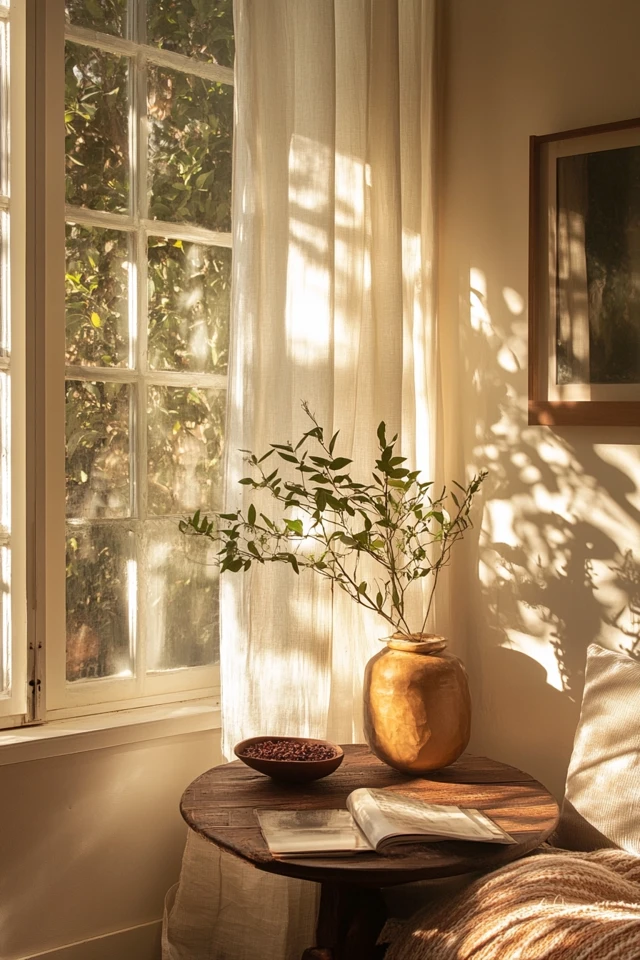
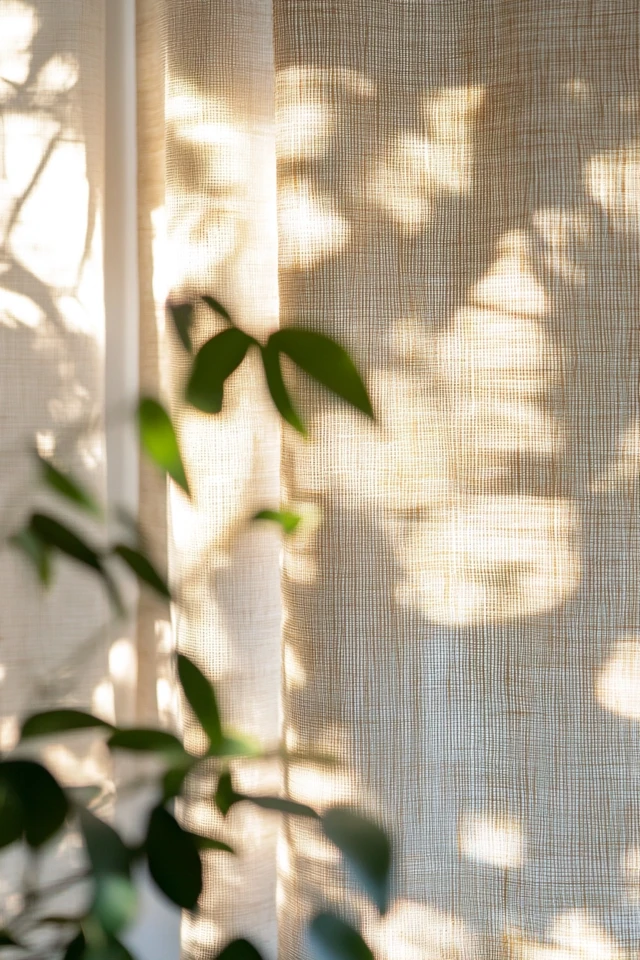
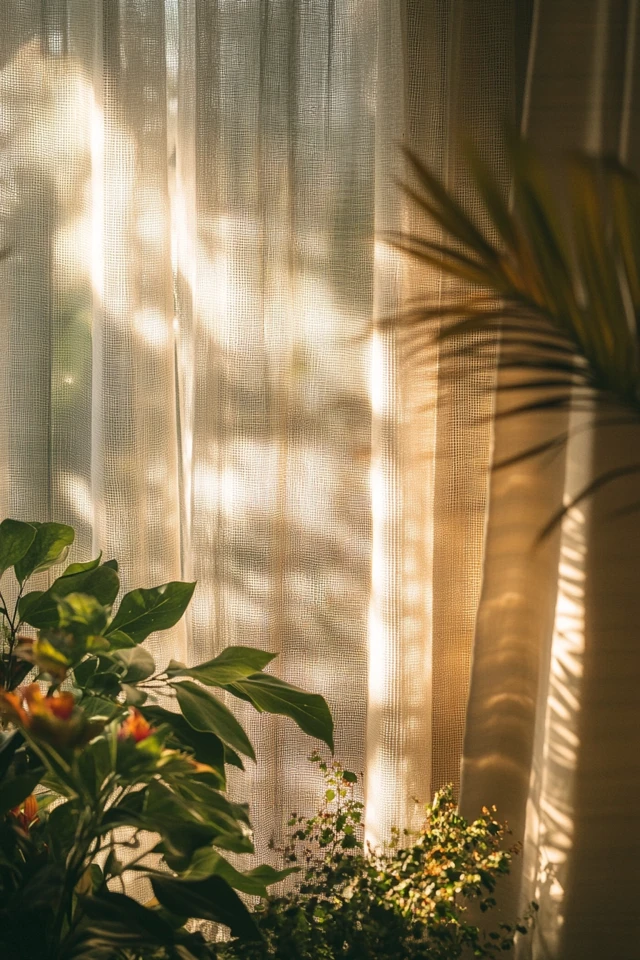
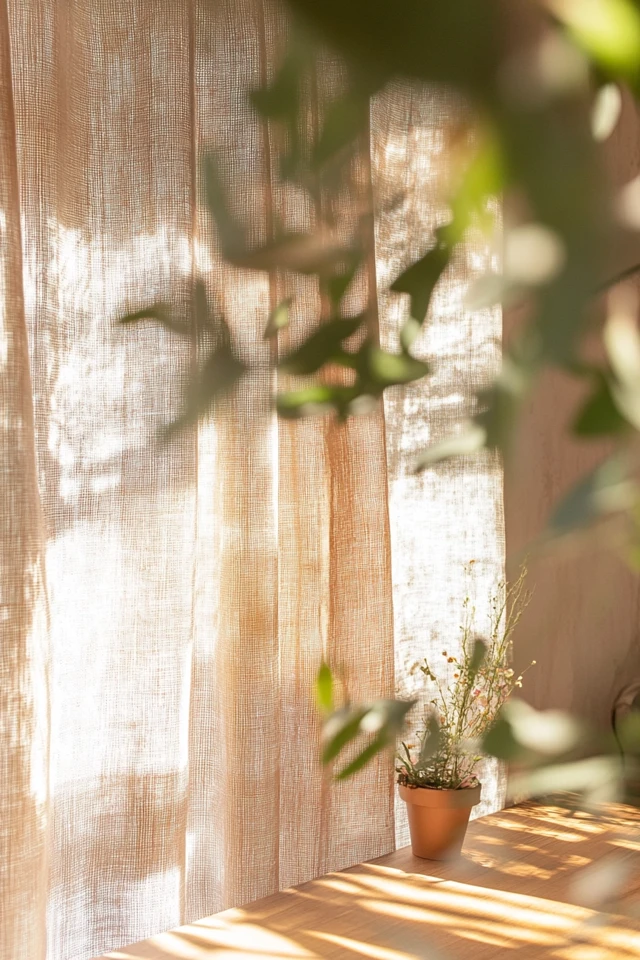
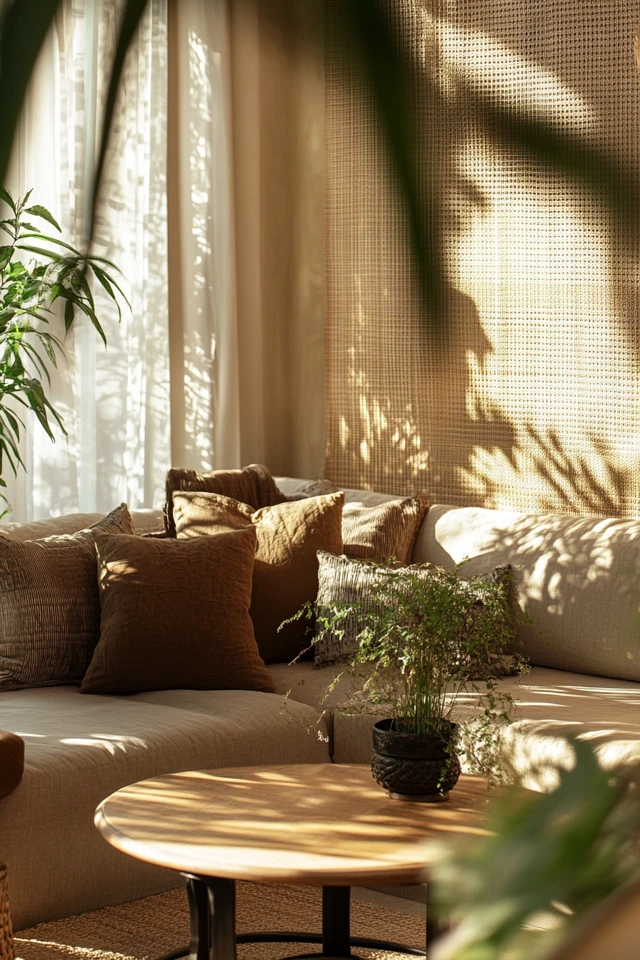
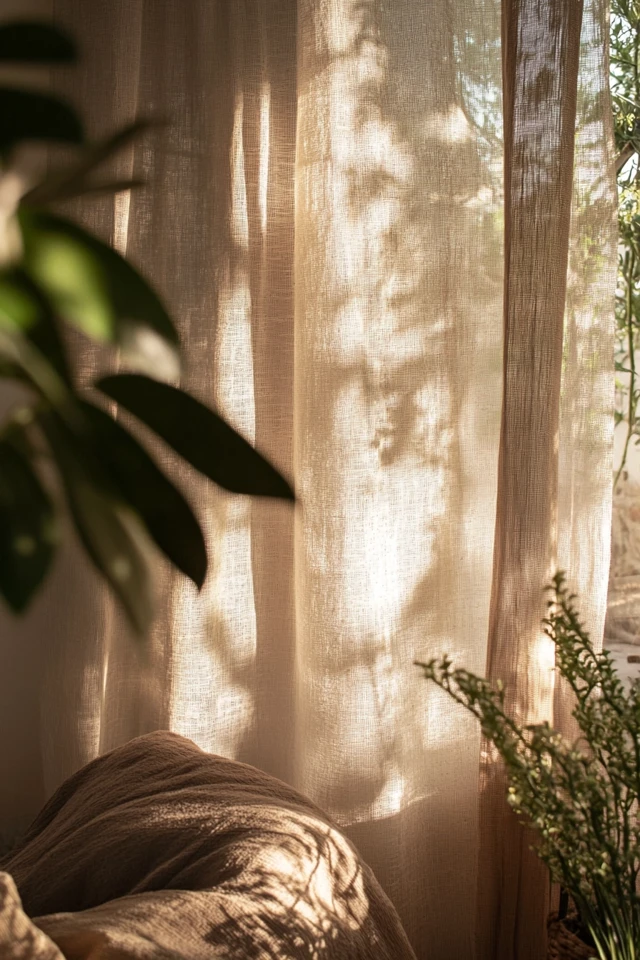
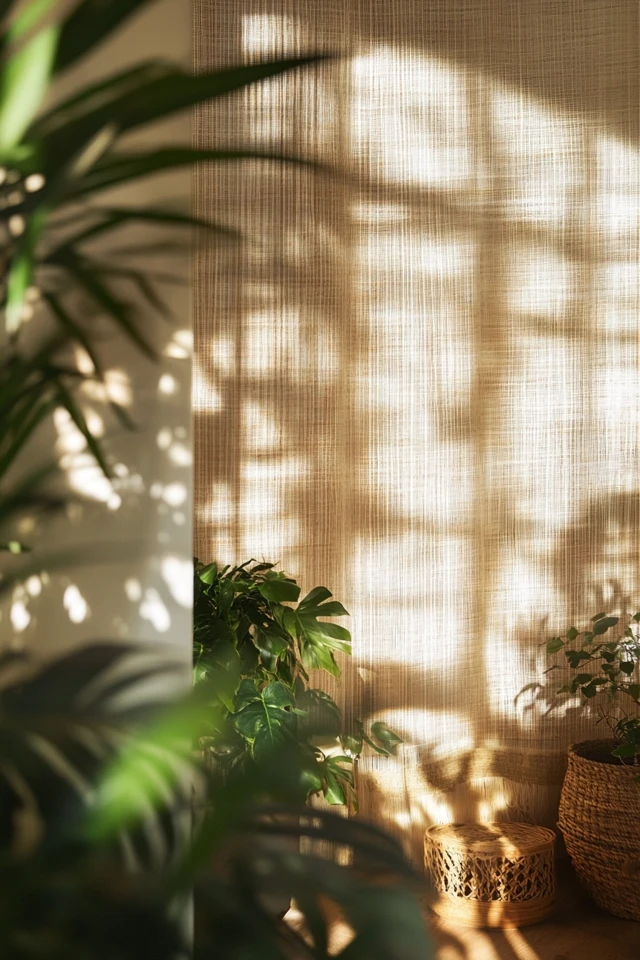
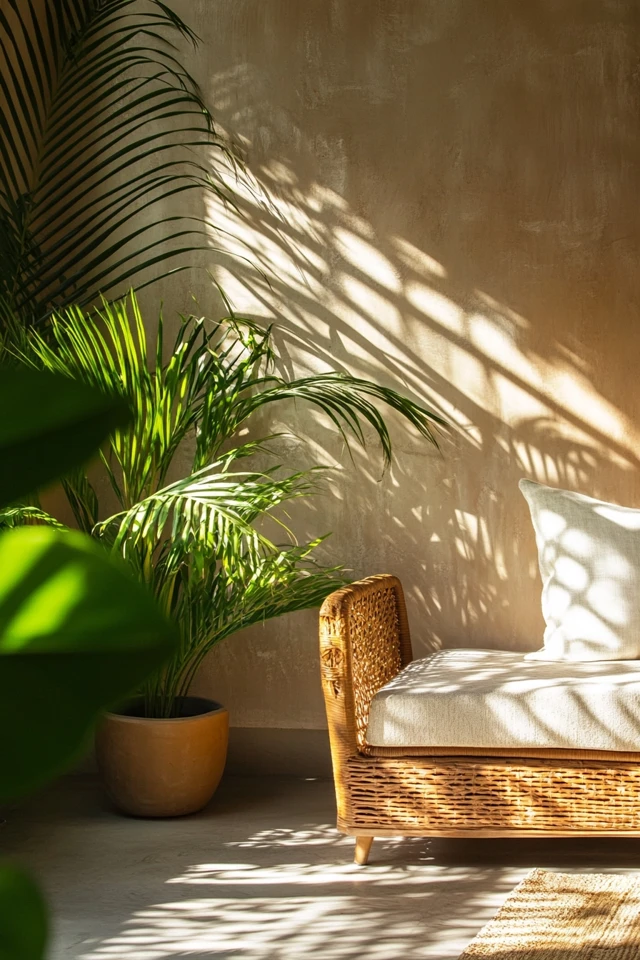
Conclusion
Combining natural and artificial light is the key to creating a boho space that feels warm, inviting, and layered with personality. Natural light enhances the organic textures and earthy tones of bohemian design, while artificial light adds depth, ambiance, and functionality. By layering different types of lighting, choosing warm tones, and incorporating unique fixtures, you can create a perfectly balanced space that looks just as stunning at night as it does during the day.
For me, mastering the art of lighting was a game-changer. It transformed my boho-inspired spaces from beautiful to truly magical. So, play with natural light, experiment with fixtures, and embrace the glow—your bohemian sanctuary awaits!
FAQ
1. Can I create a boho space with limited natural light?
Yes! Use mirrors to reflect available light and layer warm artificial lighting with statement fixtures and accents.
2. What type of bulbs work best for boho lighting?
Choose warm-toned, dimmable LED bulbs for a cozy and energy-efficient option.
3. How can I highlight textures in my boho decor with lighting?
Use table lamps or spotlights to cast soft shadows on macramé, woven accents, or textured rugs.
4. What’s a budget-friendly way to add boho lighting?
String lights and candles are affordable options that instantly enhance the boho vibe.
5. Can I mix modern light fixtures with boho decor?
Absolutely! Sleek, modern fixtures can add a stylish contrast to bohemian textures and materials.


